Top 5 Interesting Facts about Eli Whitney
Eli Whitney Jr. (December 8, 1765 - January 8, 1825) was an American inventor best known for developing the cotton gin, a crucial invention of the Industrial ... read more...Revolution that altered the Antebellum South's economy. Here are the 5 interesting facts about Eli Whitney.
-
One of the most interesting facts about Eli Whitney is that he was a businessman as early as age 14. Whitney was born on December 8, 1765, in Westborough, Massachusetts, the oldest child of wealthy farmer Eli Whitney Sr. and his wife Elizabeth Fay, who was also from Westborough. When Whitney was 11 years old, his mother, Elizabeth Fay, passed away. During the Revolutionary War, he ran a successful nail production business at his father's workshop at the age of 14.
Whitney struggled to make ends meet as a result of his stepmother's opposition to his desire to attend college by working as a farmhand and a teacher. Under the instruction of Rev. Elizur Goodrich of Durham, Connecticut, he prepared for Yale at Leicester Academy (now Becker College), where he entered in the fall of 1789 and graduated Phi Beta Kappa in 1792. Whitney intended to study law, but when he ran out of money, he decided to accept a job as a private instructor in South Carolina instead.
He was persuaded to travel to Georgia instead of arriving at his intended location. Georgia was a popular destination for New Englanders looking to make their fortunes in the last years of the 18th century. General Nathanael Greene of Rhode Island's widow and family were among his shipmates when he initially set out for South Carolina. Her name was Catherine Littlefield Greene. Whitney was welcomed to Mulberry Grove, a plantation owned by Mrs. Greene in Georgia. Phineas Miller, a fellow immigrant from Connecticut and Yale graduate who would later become Whitney's business partner, served as her plantation manager and future husband.
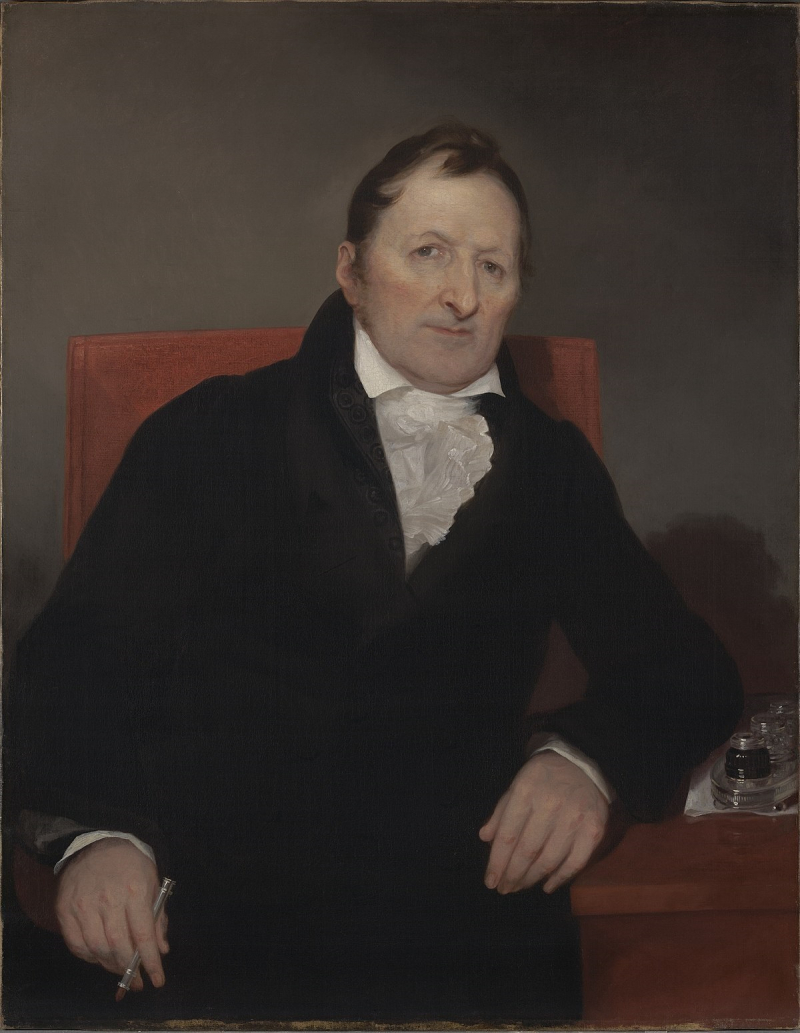
Eli Whitney Jr. -Photo: en.wikipedia.org 
Revolutionary War -Photo: britannica.com -
He was a brilliant innovator who lived in the Industrial Revolution. Whitney is most known for the cotton gin (1793) and his support for interchangeable components, two inventions that had a tremendous impact on the United States in the middle of the 19th century. The cotton gin improved cotton harvesting in the South and revived slavery at the same time. The use of interchangeable parts, on the other hand, revolutionized the manufacturing sector in the North and was a major factor in the United States' Civil War victory.
The cotton gin is a mechanical device that automates the labor-intensive, time-consuming process of removing the seeds from cotton. Whitney built a number of clever home appliances while he was staying at Mulberry Grove, which prompted Mrs. Greene to introduce him to some businessmen who were talking about the need for a machine to separate short-staple upland cotton from its seeds, work that was previously done by hand at a rate of one pound of lint per day. Whitney produced a model in a short period of time. A wooden drum with hooks nailed to it served as the cotton gin, which dragged cotton fibers through a mesh. The cotton seeds dropped outside because they could not fit through the mesh. Whitney occasionally related a tale in which he was considering how to better seed cotton when he got an idea from watching a cat try to pull a chicken through a fence but only succeed in pulling through some of the feathers.
The interchangeable part concept, which Eli Whitney championed for years as a manufacturer of muskets, has frequently been mistakenly credited as his invention. In reality, the concept existed before Whitney, and Whitney's contribution to it was one of promotion and popularization rather than invention. Whitney didn't put the concept into action successfully until nearly the end of his life, and it started in other people's armories. Whitney occasionally related a tale in which he was considering how to better seed cotton when he got an idea from watching a cat try to pull a chicken through a fence but only succeed in pulling through some of the feathers.

The cotton gin -Photo: britannica.com 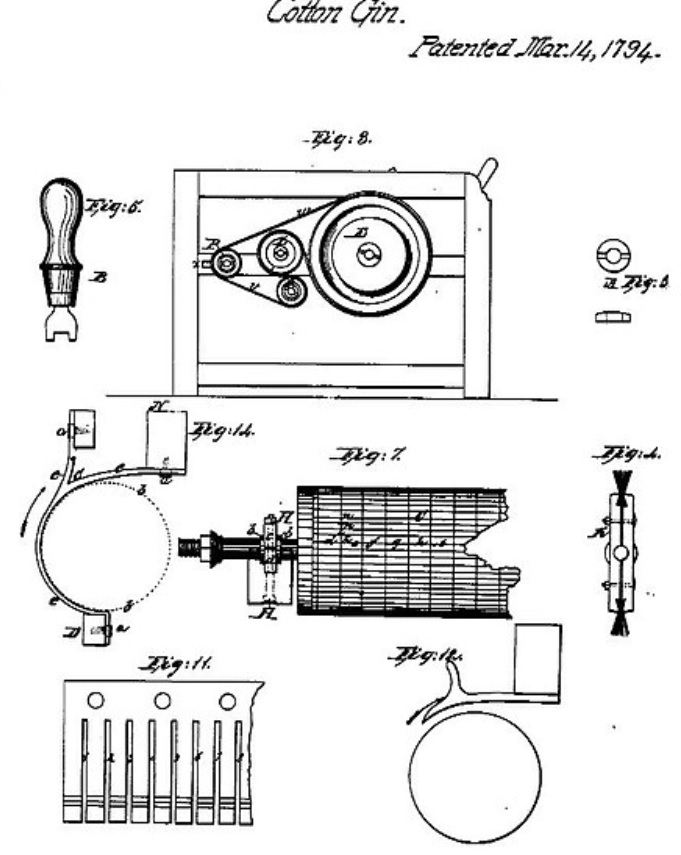
The cotton gin -Photo: wikiwand.com -
One of the most interesting facts about Eli Whitney is that he didn't profit from the cotton gin despite its significance. On October 28, 1793, Whitney submitted a patent application for his cotton gin. On March 14, 1794, the patent was granted, although it wasn't valid until 1807. The gins were not intended for sale by Whitney and his business partner Miller. Instead, they anticipated charging farmers for cleaning their cotton, two-fifths of the value paid in cotton, just like the owners of grist and sawmills. Infringement was unavoidable due to resentment about this plan, the device's simplicity mechanically, and the primitive state of patent law. Whitney and Miller were unable to produce enough gins to satisfy demand, thus gins from other producers were ready for sale.
A patent that was later revoked was given to Hogden Holmes in 1796 for a cotton gin that used circular saws instead of spikes. Ultimately, patent infringement lawsuits ate up the revenues, and their cotton gin company failed in 1797. One sometimes neglected fact is that Whitney's initial design had flaws. There is strong evidence that his sponsor, Mrs. Greene, fixed the architectural problems, but Whitney offered her no public credit or recognition.
Following the patent's approval, the South Carolina legislature approved $50,000 for those rights, while North Carolina imposed a licensing tax for five years, with a profit of roughly $30,000. A claim states that Tennessee may have paid $10,000. Whitney's cotton gin did not bring him the wealth he desired, but it did make him famous. Some historians have suggested that Whitney's cotton gin was crucial to the American Civil War's inadvertent cause. Whitney's innovation led to a revival of the plantation slave trade, which ultimately resulted in the American Civil War.
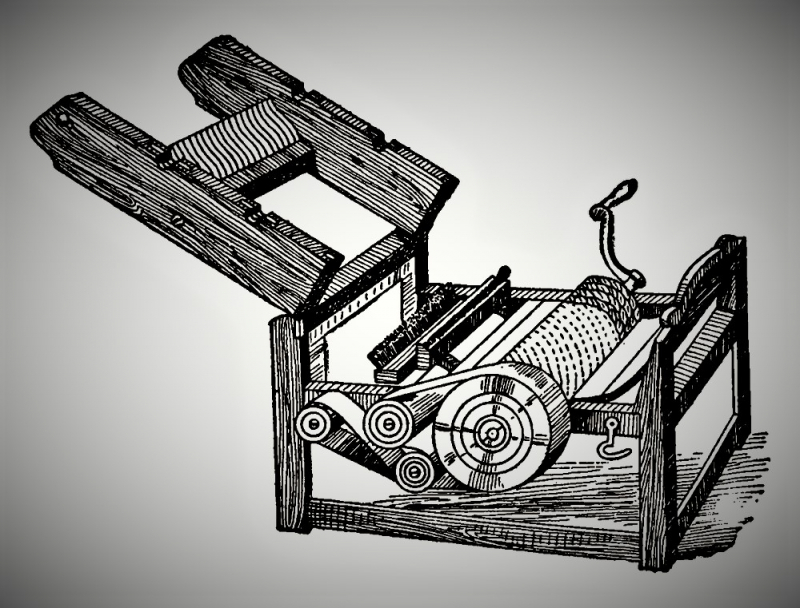
Photo: constitutingamerica.orgv 
The American Civil War -Photo: steamcommunity.com -
It is a fact that Eli Whitney died of prostate cancer. His 1817 marriage to Henrietta Edwards, granddaughter of the famous evangelist Jonathan Edwards, daughter of Pierpont Edwards, head of the Democratic Party in Connecticut, and first cousin of Yale's president, Timothy Dwight, the state's leading Federalist, cemented him as a member of Connecticut's ruling elite. Such relationships were critical to success in a corporation that relied on government contracts.
Whitney died of prostate cancer on January 8, 1825, just a month after his 59th birthday, in New Haven, Connecticut. He left behind a widow and four children. Eli Whitney III (also known as Eli Whitney Jr.) was one of his descendants who were crucial in the construction of New Haven, Connecticut's waterworks. During his sickness, he allegedly devised and built many devices to mechanically relieve his agony. The Eli Whitney Students Program, Yale University's admissions program for non-traditional students, is named after Whitney, who began his studies there at the age of 23 and graduated Phi Beta Kappa in three years.
According to Robert, Whitney was buried in New Haven, Connecticut's Grove Street Cemetery. On the grounds of the old Mulberry Grove plantation in Port Wentworth, Georgia, the foundation of the structure where his first operational cotton gin was installed still stands. The most obvious memorial to Whitney's memory, however, is located in Hamden, Connecticut, where the Eli Whitney Museum and Workshop has preserved the remains of his pioneering musket factory hamlet on the Mill River.

Grave of Eli Whitney -Photo: nhregister.com 
Grave of Eli Whitney -Photo: commons.wikimedia.org -
One of the most interesting facts about Eli Whitney is that his cotton gin revolutionized Southern agriculture as well as the national economy. Southern cotton found ready markets in Europe and in New England's growing textile mills. Cotton exports from the United States increased dramatically after the invention of the cotton gin, rising from less than 500,000 pounds (230,000 kg) in 1793 to 93 million pounds (42,000,000 kg) by 1810. Cotton, unlike most agricultural products, could be preserved for long periods of time and carried over large distances. From 1820 until 1860, it was the primary export of the United States, accounting for more than half of all exports.
Whitney hoped that his cotton gin would eliminate the need for enslaved labor and speed the abolition of southern slavery. The cotton gin, a labor-saving technique, paradoxically helped to sustain and prolong slavery in the United States for another 70 years. Prior to the 1790s, slave labor was mostly used in the cultivation of rice, tobacco, and indigo, none of which were particularly profitable. Cotton, on the other hand, was not because of the difficulties of seed removal. However, with the invention of the gin, cultivating cotton with slave labor became extremely profitable, becoming the primary source of wealth in the American South and the foundation of frontier settlements from Georgia to Texas. "King Cotton" became a powerful economic force, and slavery remained an important institution in Southern society.
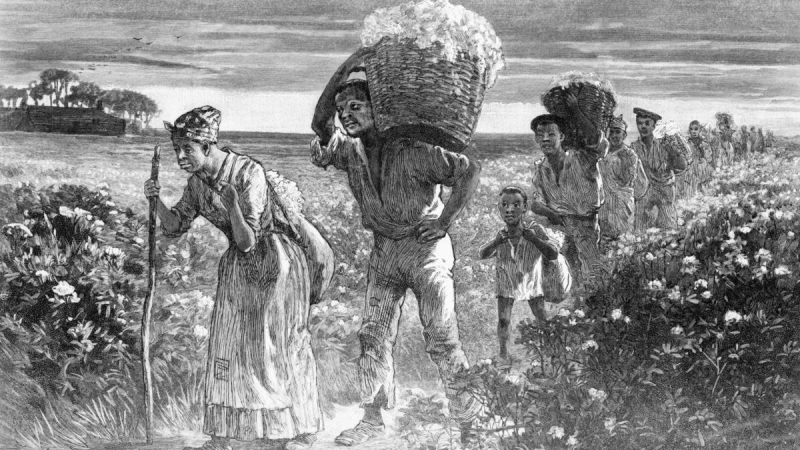
Photo: history.com 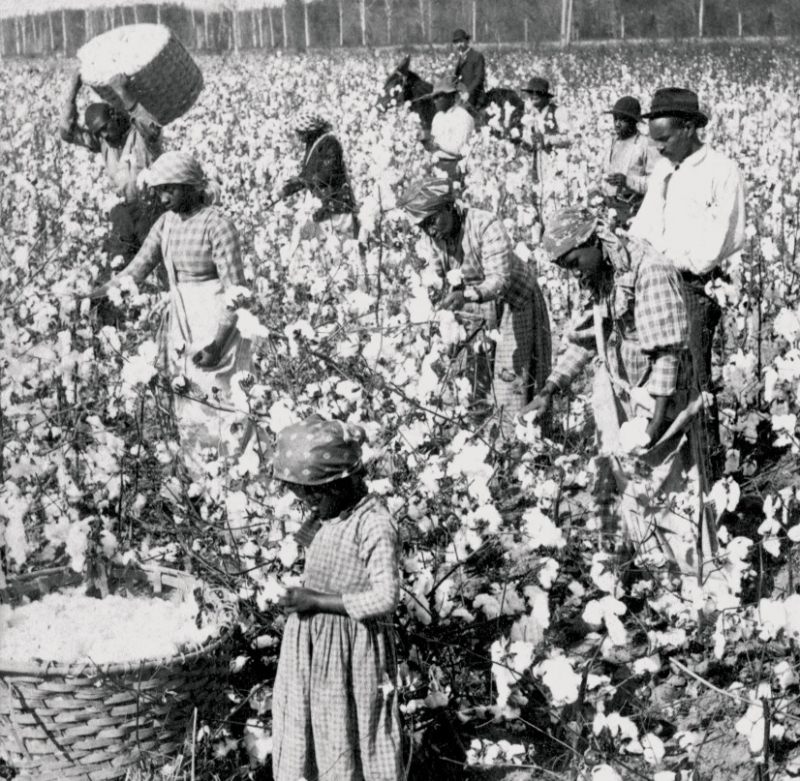
Photo: britannica.com


























